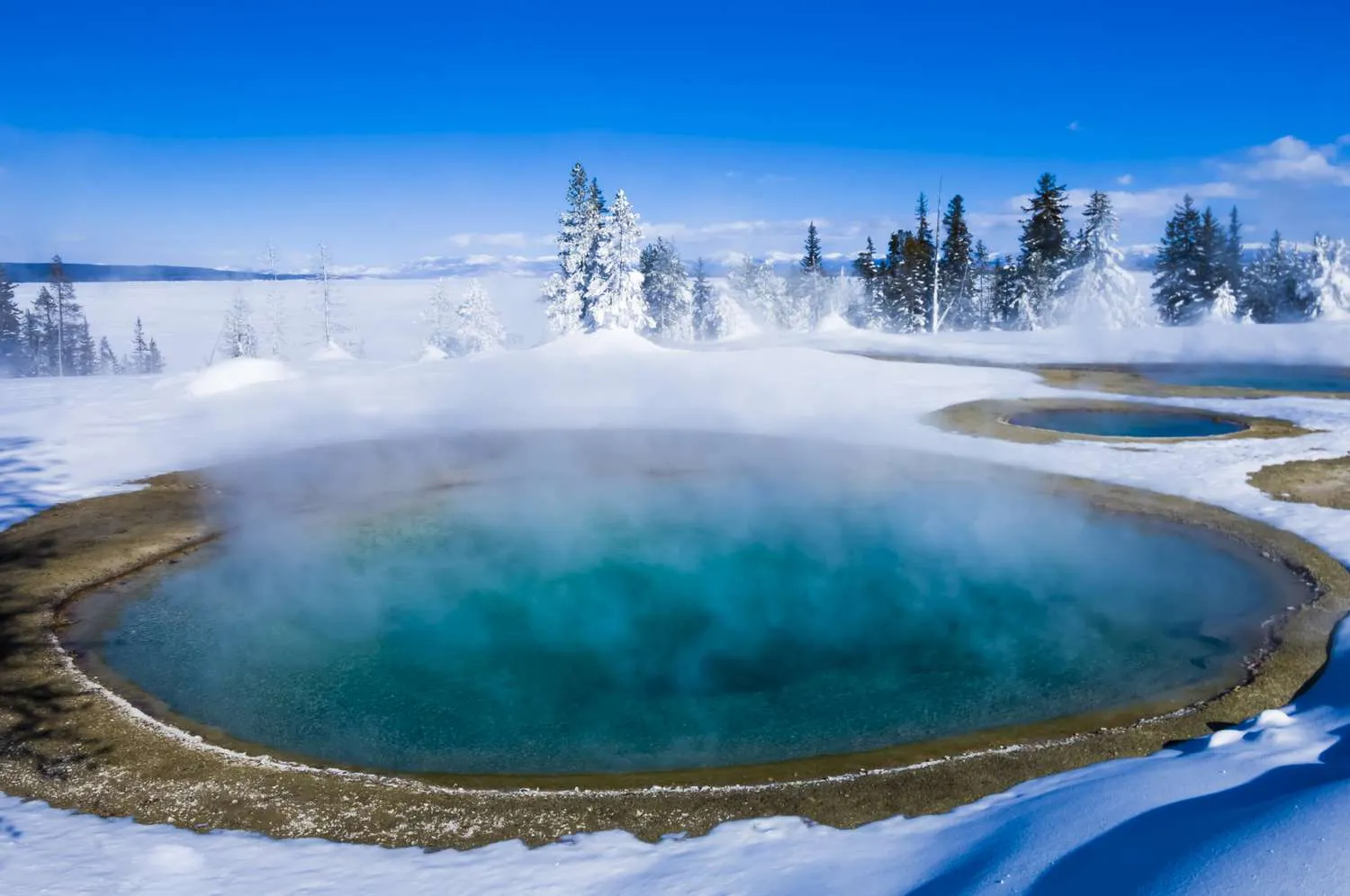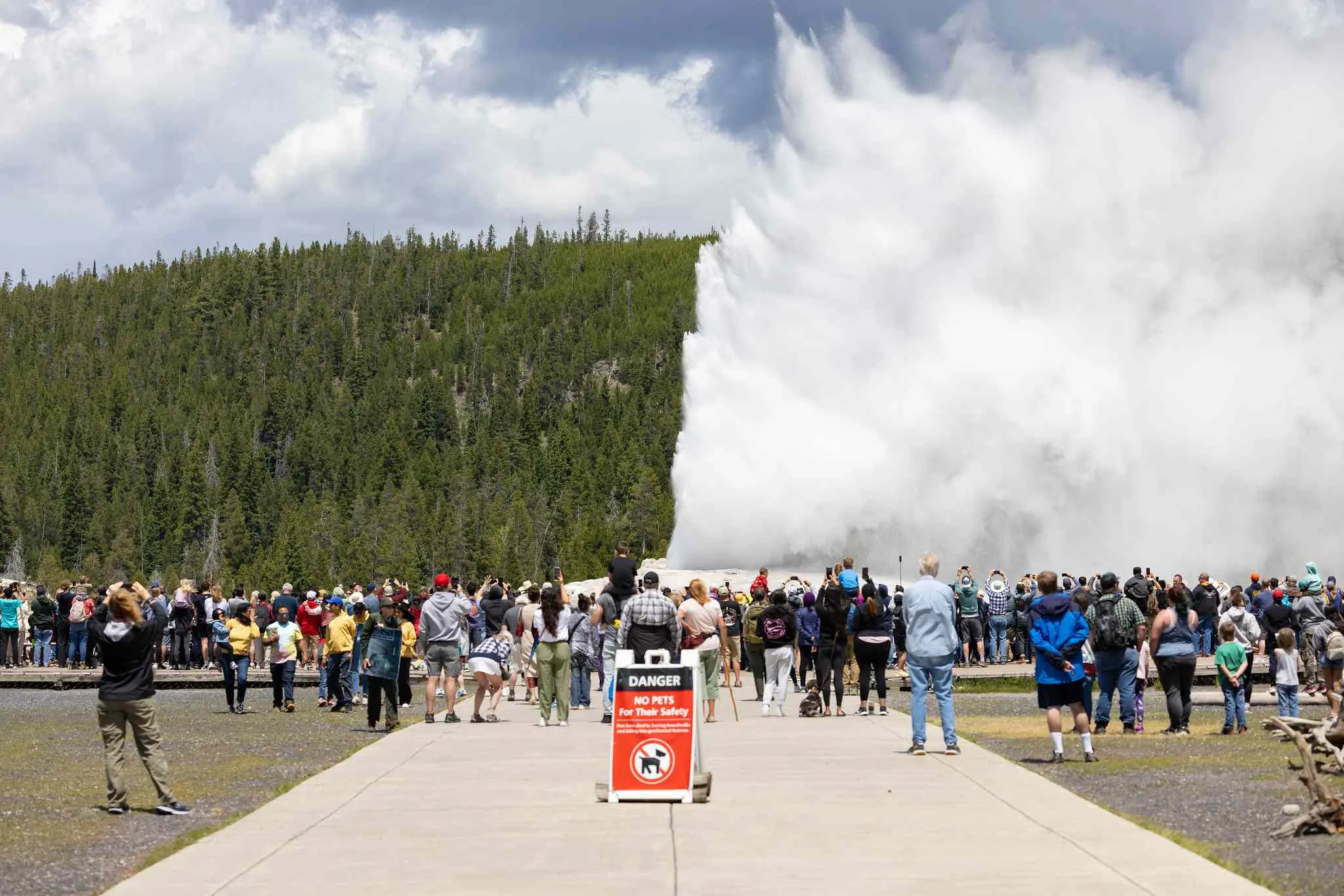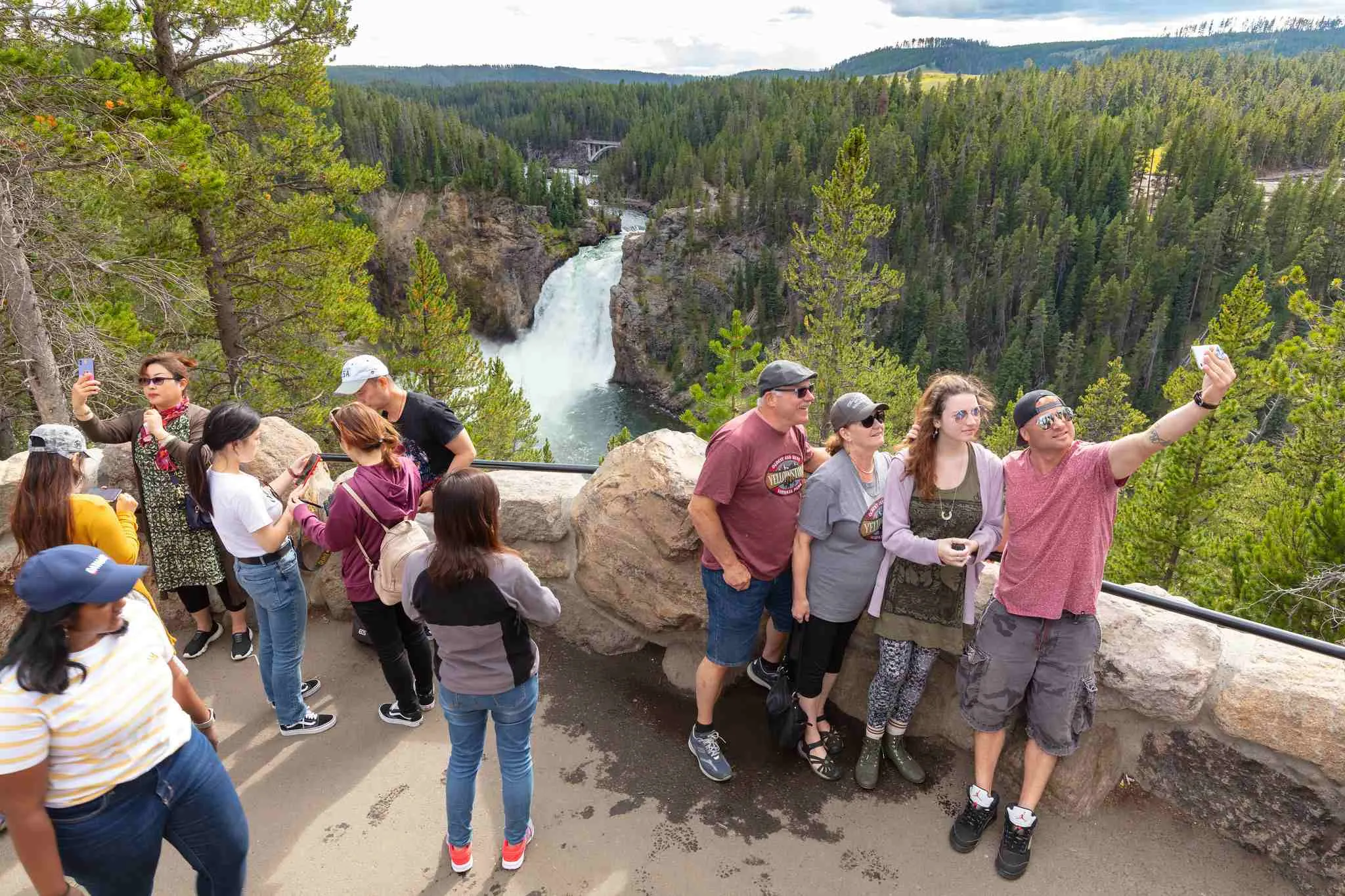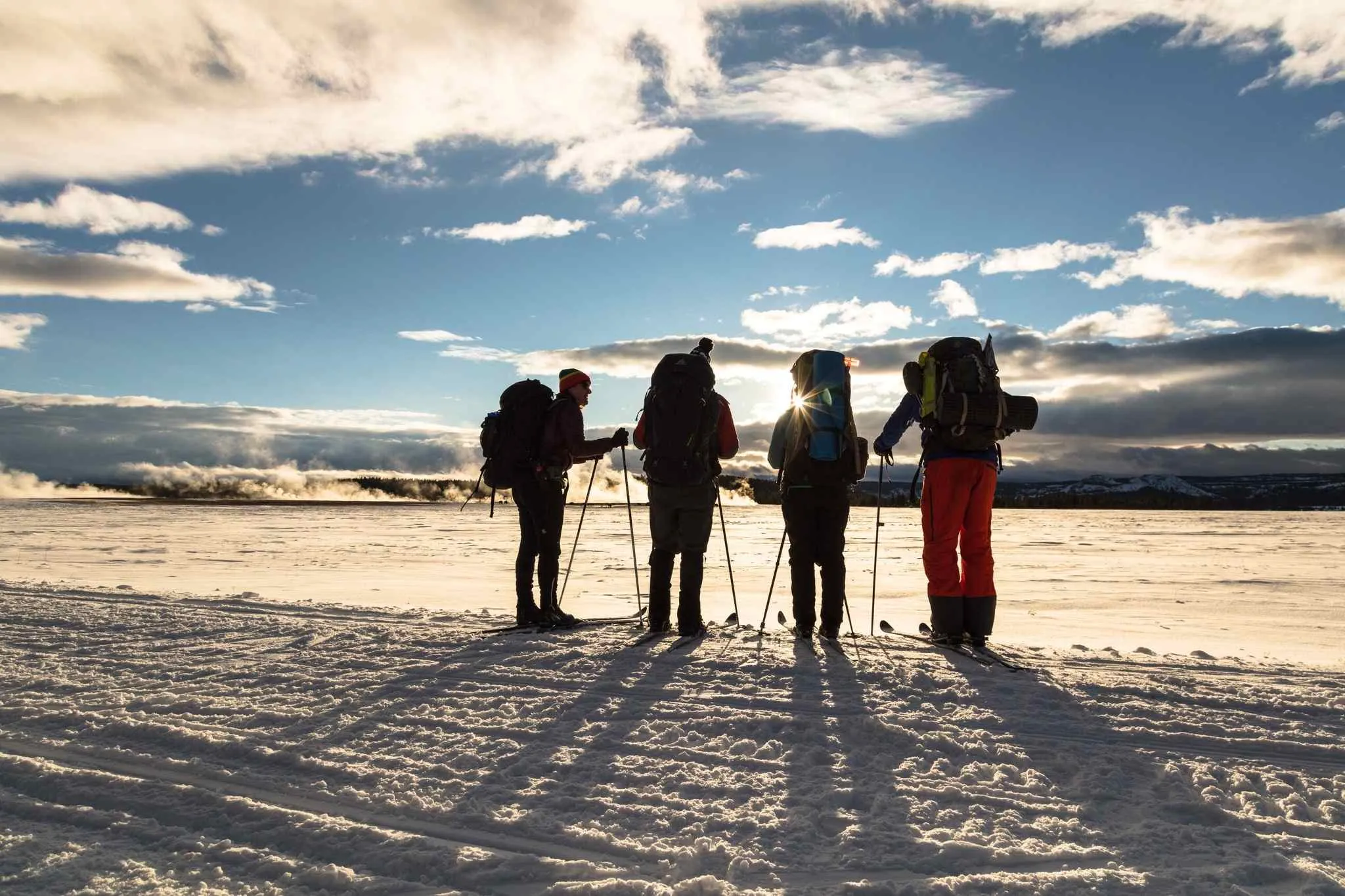Welcome to America’s beautiful natural world! As an avid traveler, I have had the opportunity to explore many wonderful destinations around the world, but none have left a lasting impression like Yellowstone National Park. With its stunning landscapes, biodiversity, and unique natural phenomena, Yellowstone is one of the top destinations for those who love to explore and experience.
But, to fully enjoy the beauty of Yellowstone, you need to prepare for one important factor: the weather. From cold snowstorms in the winter to hot summer days, the weather in Yellowstone can be very erratic and unpredictable. So in this article, I will share with you the necessary information about the Yellowstone National Park weather, helping you prepare for your trip and fully enjoy the beauty of this place. Ready to explore with me and nationalparkshops.com? Let’s go!
Monthly Weather in Yellowstone National Park
Yellowstone National Park weather can be very erratic and unpredictable. But don’t worry, I’m here to help you understand the weather situation every month. The information below is compiled from official weather channels and based on my own experiences when visiting here. Therefore, this will be my own subjective assessment of Yellowstone National Park weather each month. You can use this information as a reference for your plan to visit Yellowstone.
Spring (March – May)
When you visit Yellowstone National Park weather in spring, you’re in for an adventure filled with surprises. It’s a time when the park shakes off its winter coat, and the weather likes to keep you on your toes. One day might greet you with a dusting of snow or a refreshing rain, while the next offers warm sunshine. In March, you’ll find temperatures ranging from 34°F to 42°F, and around 37 inches of snowfall, so pack your layers! By the time May rolls around, things warm up a bit more with highs averaging 57°F—but don’t be surprised if the nights still feel frosty.
Spring is a spectacular time to explore Yellowstone, even with the unpredictable weather. The wildlife is bustling, and you get to see the incredible transformation of nature waking up after its winter slumber.

Summer (June – August)
Summer is the perfect time to experience the beauty of this national park. Warm, dry weather and long days are the main reasons why summer is the most popular time to visit Yellowstone.
Although there have been instances of snowfall on July 4, summer weather is generally more stable and pleasant. Average daily temperatures in July and August range from 70°F to 80°F, with nighttime lows dropping into the 30s and 40s.
However, keep in mind that Yellowstone’s high elevation (6,500 to 8,000 feet) can make the sun stronger and the Yellowstone National Park weather more volatile. Afternoon thunderstorms are common during the summer months, so you should always be prepared with rain gear. I recommend taking advantage of your time to explore Yellowstone in the summer. With great weather and stunning views, you’re sure to have an unforgettable experience!

Read More: Yellowstone National Park Boating: Boat Rentals and Rules
Read More: Yellowstone National Park Hiking
Autumn (September – November)
As summer gives way to winter, fall in Yellowstone is a pleasant mix of warm, dry days and cool, crisp nights. In September, average temperatures range from 64°F to 30°F, with about 0.5 inches of snowfall. By November, the average temperature drops to 34°F, with nighttime lows of around 12°F and 9 inches of snowfall.
Although fall weather can be unpredictable, it’s a great time to explore Yellowstone. There are fewer tourists, and you can enjoy the beautiful colors of the landscape and unique wildlife behaviors in the park, like elk mating season. I recommend taking advantage of the fall to explore Yellowstone for its great weather, beautiful scenery, and lack of crowds.

Winter (December – February)
Winter in Yellowstone National Park weather is nothing short of magical. The park transforms into a true winter wonderland, where the “fire and ice” effect is on full display. The contrast between the snowy landscape and the steamy hot springs and geysers is truly breathtaking. With most of the park’s roads closed to regular vehicles, you can explore this serene beauty via over-snow vehicles like snowcoaches and snowmobiles.
During the winter months, temperatures range from average highs of 24°F to lows of 2°F in December, with about 72 inches of snowfall. By February, the highs reach around 30°F, with lows near 3°F and an additional 10 inches of snowfall. Though the weather can be harsh, winter offers a unique chance to enjoy Yellowstone’s natural beauty in a peaceful, uncrowded setting. So bundle up and prepare for a memorable adventure in this snowy paradise!

Read More: Yellowstone National Park Fishing: Guide and Tips for Fishing
Read More: Itinerary: How Many Days Need For Yellowstone National Park?
Average temperatures in Yellowstone National Park
Here’s a look at the average temperatures in Yellowstone National Park by month. These are rough estimates (but they may be accurate).
|
Month |
Average high |
Average low |
|
January |
-2°C |
-16°C |
|
February |
0°C |
-15°C |
|
March |
4°C |
-12°C |
|
April |
8°C |
-7°C |
|
May |
12°C |
-2°C |
|
June |
17°C |
1°C |
|
July |
23°C |
4°C |
|
August |
22°C |
3°C |
|
September |
17°C |
-1°C |
|
October |
9°C |
-5°C |
|
November |
1°C |
-11°C |
|
December |
-3°C |
-16°C |
Tips for visiting Yellowstone in various Weather Conditions
Visiting Yellowstone National Park can be a fantastic experience, but it’s crucial to be prepared for the varying weather conditions throughout the year. Here are some tips for visiting the park in different seasons:
April to June
Weather Conditions:
- Variable and unpredictable; snow is common in early spring.
- Temperatures range from 30°F to 60°F (-1°C to 15°C).
Tips:
- Layered Clothing: Wear layers to adjust to the changing temperatures. Include a waterproof outer layer for unexpected rain or snow.
- Footwear: Waterproof hiking shoes are essential for muddy and wet trails.
- Check Road Conditions: Some roads and facilities may still be closed due to snow. Check the park’s website for updates.
- Wildlife Caution: Animals are more active in spring. Maintain a safe distance and use binoculars for viewing.
July to August
Weather Conditions:
- Warm days and cool nights; temperatures range from 70°F to 80°F (21°C to 27°C) during the day and can drop to 40°F (4°C) at night.
- Afternoon thunderstorms are common.
Tips:
- Sun Protection: Bring sunscreen, hats, and sunglasses to protect against the strong sun.
- Hydration: Carry plenty of water, especially if Yellowstone hiking.
- Early Starts: Visit popular sites early in the morning to avoid crowds.
- Bear Safety: Be bear aware – carry bear spray and know how to use it. Make noise while hiking to avoid surprising wildlife.
September to October
Weather Conditions:
- Cooler temperatures with a higher chance of early snowfall. Temperatures range from 30°F to 60°F (-1°C to 15°C).
- Crisp, clear days are common.
Tips:
- Warm Clothing: Bring layers, including a warm jacket, gloves, and a hat.
- Shorter Days: Plan activities accordingly as daylight hours decrease.
- Road Closures: Be aware that some roads and facilities start closing for the season.
- Photography: Fall colors are stunning. Bring a camera to capture the scenery.
November to March
Weather Conditions:
- Cold and snowy. Temperatures range from 0°F to 30°F (-18°C to -1°C).
Tips:
- Winter Gear: Dress in multiple layers, including thermal underwear, a heavy coat, gloves, a hat, and waterproof boots.
- Snow Chains/Tires: If driving, ensure your vehicle is equipped for snowy conditions, including carrying tire chains.
- Limited Access: Many roads are closed to regular vehicles. Consider guided snowcoach or snowmobile tours.
- Winter Activities: Enjoy activities like cross-country skiing, snowshoeing, and wildlife viewing. Always check trail conditions and weather forecasts.
General Tips for All Seasons:
- Stay Informed: Check the weather forecast and park alerts before your visit.
- Respect Wildlife: Keep a safe distance from all wildlife. Never approach or feed animals.
- Leave No Trace: Follow the principles of Leave No Trace to help protect the park’s natural environment.
- Emergency Preparedness: Carry a map, compass, or GPS device. Cell phone reception is limited in many areas of the park.
Read More: Top 9 Affordable Lodging in Yellowstone National Park 2024
FAQs about Yellowstone National Park Weather
What is the best month to visit Yellowstone National Park?
Looking for the best time to visit Yellowstone National Park? I recommend visiting the national park in the spring (April to June) or fall (September to October). During these seasons, Yellowstone National Park weather is usually mild and the park is less crowded than during the peak summer months.
In late April and May, you can witness wildlife awakening from winter, and the landscape begins to bloom with beautiful spring flowers. Additionally, roads and facilities gradually open, allowing you to access more attractions.
In September and early October, the summer crowds have thinned out, making it easier to explore popular attractions without the crowds. This time of year also offers stunning fall foliage, especially in the valleys and along the park’s rivers. Furthermore, September is the time of elk mating season, where you can observe male elks displaying their impressive antlers and making mating calls, adding a unique wildlife experience to your visit.
What is the warmest month in Yellowstone?
July is the warmest month in Yellowstone National Park, with average high temperatures around 78°F (26°C). This month offers the most stable Yellowstone National Park weather, perfect for outdoor adventures like hiking, camping, and wildlife watching. However, keep in mind that temperatures can vary with elevation, and higher altitudes tend to be cooler.
While July is warm, afternoon thunderstorms are a possibility, so make sure to pack appropriate gear. It’s also the peak tourist season, which means popular spots like Old Faithful and the Grand Prismatic Spring can get crowded. To beat the crowds, try exploring the park early in the morning or later in the afternoon. That way, you can enjoy the stunning sights with a bit more tranquility.
How does elevation affect weather conditions in Yellowstone National Park?
When visiting Yellowstone, it is important to understand that elevation plays a major role in shaping Yellowstone National Park Weather. With elevations ranging from approximately 5,280 feet (1,600 meters) to over 11,000 feet (3,400 meters), Yellowstone experiences significant temperature variations and unpredictable weather.
I want to share with you that higher elevations are generally cooler, and temperatures can drop dramatically, even during the summer months. This can lead to rapid weather changes; it is not uncommon to experience sun, rain, and even snow in the same day.
For example, while it is warm and sunny at lower elevations, higher elevations can experience cold winds and snow. So, to stay safe and enjoy the best experience, you should be prepared for all weather conditions, regardless of the season, by bringing multiple layers of clothing and waterproof gear.
Understanding how altitude affects the weather will help you plan your activities and stay safe while exploring the park. Remember that the weather in Yellowstone can change quickly, so always be prepared!
Conclusion
As a seasoned traveler, I’ve had the privilege of exploring some of the world’s most breathtaking destinations, but Yellowstone National Park remains one of my all-time favorites. And it’s not just the park’s geysers, hot springs, and diverse wildlife that make it so special – it’s also the ever-changing weather.
Alright, it’s not just about the Yellowstone National Park weather – it’s about the experience. And trust me, Yellowstone National Park is an experience you’ll never forget.
READ MORE:





